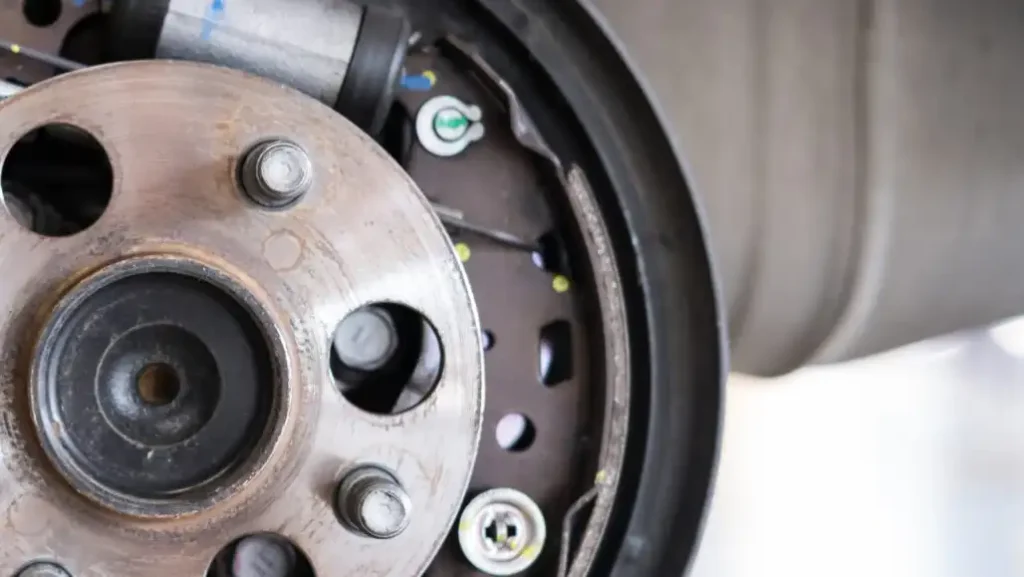Is It Bad To Drive On A Bad Wheel Bearing

That telltale hum. The groan that grows with speed. The unsettling wobble you feel through the steering wheel. These are the harbingers of doom – or, more accurately, the signs of a failing wheel bearing. But just how bad is it to drive on a bad wheel bearing? The answer, like the performance characteristics of a classic Italian sports car versus a modern hybrid hatchback, is nuanced and depends heavily on several factors.
The Wheel Bearing Basics: A Primer for the Petrolhead
First, let's understand what a wheel bearing actually does. It's a deceptively simple component: a set of steel balls or rollers held within a metal race, designed to allow the wheel to rotate smoothly and efficiently around the axle. When these bearings start to wear, they create friction, which manifests as noise, heat, and eventually, excessive play in the wheel.
Severity Matters: From Slight Hum to Catastrophic Failure
The severity of the wheel bearing issue dictates the immediate danger. A slight hum, barely audible above the roar of your engine, might be indicative of early wear. Continuing to drive like this for a short while *might* be okay, especially if you're just trying to get home or to a reputable mechanic. However, ignoring it is playing a dangerous game. Think of it as ignoring a small crack in your windscreen – it will only get worse.
On the other hand, a loud, grinding noise accompanied by noticeable vibration is a different beast altogether. This signifies significant bearing damage, potentially leading to catastrophic failure. Driving under these conditions is incredibly risky. The wheel could lock up, causing a sudden loss of control, particularly at high speeds or during cornering. Imagine your front wheel suddenly seizing mid-corner on a track day – not a pretty picture!
Model and Technology Differences: The Devil is in the Details
The impact of a bad wheel bearing can vary depending on your vehicle’s make, model, and even engine. Modern cars with advanced driver-assistance systems (ADAS) can sometimes be affected. For example, a faulty wheel bearing can interfere with the ABS or traction control systems, as these systems rely on accurate wheel speed data. Here’s a quick look at some examples:
- Modern BMWs with xDrive (All-Wheel Drive): A failing wheel bearing can confuse the xDrive system, leading to erratic power distribution and potentially damaging the transfer case.
- Tesla Model 3/Y: These electric vehicles rely heavily on regenerative braking. A bad wheel bearing can negatively impact the regen system's efficiency and potentially trigger error codes.
- Classic Muscle Cars (e.g., Ford Mustang, Chevrolet Camaro): While less dependent on complex electronic systems, the lack of modern stability control can make a wheel bearing failure even more dangerous, especially in wet or slippery conditions. The sudden loss of control can be difficult to recover from.
Pros and Cons of Delaying Wheel Bearing Replacement: A Balanced View
| Consideration | Pros (of Delaying - Short Term!) | Cons (of Delaying) |
|---|---|---|
| Cost | Postponing the repair saves money *initially*. | Increased damage to other components (e.g., axle, hub). Potentially higher repair bill later. |
| Convenience | Avoids the immediate inconvenience of being without your vehicle. | Risk of breakdown, requiring expensive towing and emergency repairs. Significant safety risk. |
| Safety | None - delaying repair offers no safety benefits. | Significantly increased risk of accidents due to wheel lockup or loss of control. |
Real-World Driving Impressions: The Subjective Experience
Beyond the technical aspects, the driving experience with a bad wheel bearing deteriorates rapidly. I recently experienced a failing rear wheel bearing on my daily driver (a humble but reliable Honda Civic). Initially, the noise was barely perceptible. However, over the course of a week, it escalated to a noticeable roar, accompanied by a slight vibration through the seat. Cornering felt increasingly unstable, and I could sense the rear end of the car wanting to drift slightly. It was unnerving, to say the least. On a separate occasion, a friend experienced a sudden wheel bearing failure on his Porsche 911 during a spirited drive. He described it as "terrifying," stating that the car became almost uncontrollable for a brief moment.
The Verdict: Don't Gamble With Your Safety (or Your Car!)
Driving on a bad wheel bearing is never a good idea. While a slight hum might seem innocuous, it's a warning sign that should be addressed promptly. Ignoring it can lead to more significant damage, increased repair costs, and, most importantly, a serious safety risk. Prioritize your safety and the well-being of your vehicle – get that wheel bearing replaced!
And now, for the fun part: What's the most terrifying car failure you've ever experienced? Let the debate begin!
